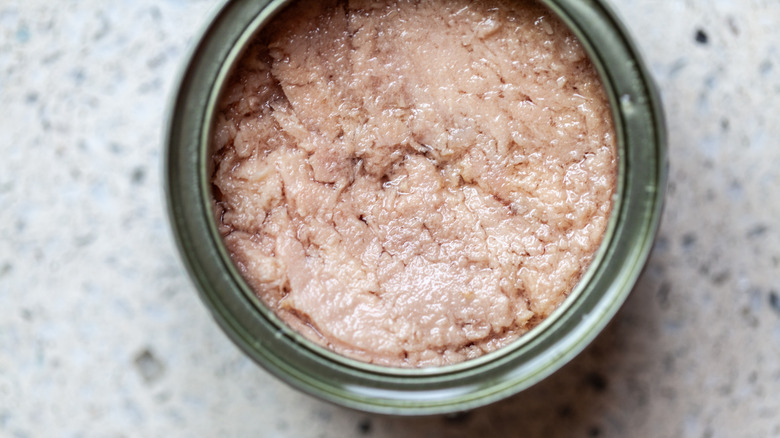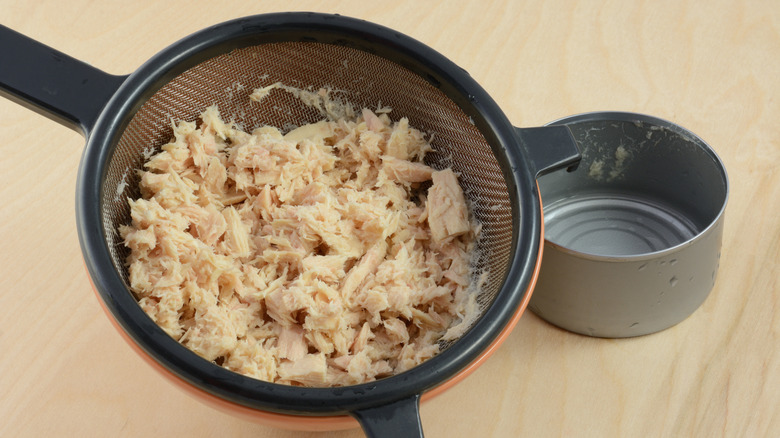One Prep Mistake Makes Meals With Canned Tuna Super Watery
Canned tuna is a great way to add some protein, healthy fats, and rich flavor to so many dishes. You can use canned tuna in fish tacos, pasta, or salads. It's a truly versatile addition, and there are plenty of genius uses for a can of tuna that mean it's a pantry staple for many of us. But as with other foods, there are a few mistakes to avoid with canned tuna. The biggest one? Not draining the tuna before using it.
Draining your tuna is crucial, especially if it's in water rather than oil. Water-packed fish should always be drained unless you want your dish to be a sloppy mess. The excess moisture can quickly turn your sandwich soggy, or make your tuna dip too watery.
Too much oil in oil-packed fish can also negatively affect the texture of your meal, making it overly greasy. Draining the oil will preserve the correct texture of your dish as well as minimizing the amount of fat, if that's a concern. The exception is when you're making something like tuna salad, where the flavorful oil is a key ingredient.
How to drain your tuna effectively
Draining your tuna by opening the lid halfway and letting the liquid pour out into the sink might be your go-to, but there's an even easier method. Pour your tuna into a sieve or strainer over the sink and squeeze down onto the tuna gently. This way is far less fiddly and more efficient in getting all the liquid out. Alternatively, you could use a potato ricer to squeeze out the moisture. Whichever method you prefer, it's time to say goodbye to soggy tuna sandwiches and watery salads.
If you're looking to lower your sodium intake, you can also choose to rinse your tuna after you've drained it. This will significantly reduce the sodium amount. Just keep in mind that you'll also lose some of the rich flavor, so adjust the seasonings in your meal accordingly.
For those of us using oil-based tuna but not wanting the oil going down the kitchen drain, a great hack is to pour the tuna into a bowl, push it to one side, and use a paper towel to soak up the oil. If the tuna still looks oily, press down on it with another paper towel. Or, rather than throwing it away, you can use canned tuna oil for cooking instead.

